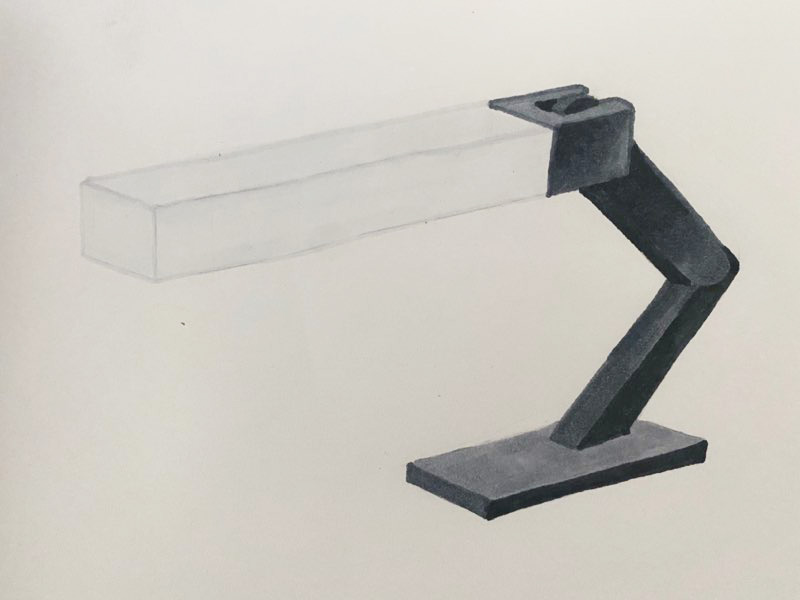
I edited this video to present the final version of the clearr aura lamp. It highlights our target user and use case, showcases the main features of the lamp, and explores our journey in designing it, from sketches to a real working prototype that we built.
As a Senior graduating in 2020, Covid-19 struck right in the middle of my Product Design capstone.
The project that my team and I had originally been working on all quarter would no longer be feasible to test in the midst of quarantine. We decided we needed to pivot to a different project for our final quarter.
With everything from school to work transitioning to be online, all of the issues associated with video conferencing began to impact everyone's lives.
We decided to focus on designing a lamp optimized for the "work from home" lifestyle, which would light a user's face optimally for video calls without being too harsh on their eyes.
We first needed to determine what our target audience for the product would be. We talked to a variety of potential users, from fellow college students to experienced professionals.
Between qualitative evidence from these interviews as well as quantitative evidence from a survey we conducted, we saw that working professionals, ages 35-60, seemed to be most interested in improving their appearance on video calls.
This target user group would include people working high-paying positions, such as in tech, business management, or finance. We hypothesized that these users would also be more likely to pay a higher price for a high quality, longer-lasting product.
Based on this framing, we wanted to craft our brand specifically in the direction of higher quality tech products like Apple, whose brand reputation is largely built on simple, clean, and high quality design.
Our basic business model would be direct-to-consumer, with sales conducted through our own website, and with exposure to the product pushed primarily through social media ads.
We imagined we could launch the business with a crowd-funding campaign to both raise capital as well as build excitement and hype around the brand.
My teammates and I formulated this business plan and marketing strategy because at the time, we thought we may actually end up trying to launch this product as a startup.
We chose the name "clearr", looking to portray a sense of brightness, clarity, and elegance. The extra "r" ensures it wouldn't be mixed up with the company Clear, while retaining the same pronunciation.
For the lamp itself, we settled on the name "aura". Beyond the obvious association with light, we chose "aura" to emphasize what we aimed to offer: a product that will not only make you look great on video, but will inspire you to exude an aura of confidence and competence.
I designed this logo to reflect our brand's aspirations. The sans-serif typeface reflects a modern, techy company. The rays emanating from the logotype reinforce the idea of light and sharpness. The yellow and black color combo feels professional and also playful, industrial but also modern.


As a team, we decided we had to divide up the work, with us each taking the lead on a particular part while still collaborating together on each part of the project. The role we decided on for me was the Industrial Design Lead and Brand Manager.
As Industrial Design Lead, I lead the industrial design effort of creating the lamp, including the lamp's form, interface, and lighting (placement, size, color, intensity).
As Brand Manager, I designed the branding of clearr, including the visual/graphical components as well as the emotional/aspirational aspects of the brand.
We began our design process with ideation. Each of us produced a large quantity of sketches with different ideas for what the lamp could look like. Pictured below are a few of the designs I had originally created.




I built this cardboard prototype to explore the functionality of the wide light-bar with adjustable height. I tested it with as many people as I could while in the height of quarantine, on myself as well as with several family members and a friend. Overall, the feedback was positive and we decided to continue with this design direction.


After choosing a design direction based on our sketching and prototyping, I started creating 3D iterations of the lamp in Fusion360 based on the general design wireframe, testing out different materials and shapes.




I created a series of high-fidelity rendered images and animations using Blender to visualize the final product.




